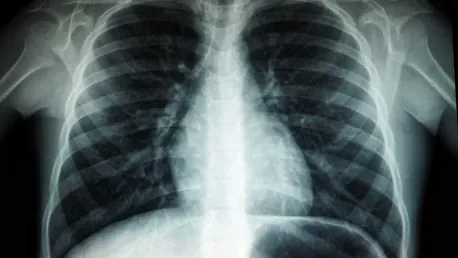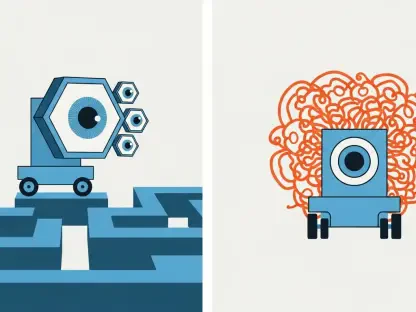The collaboration between GE HealthCare and NVIDIA is set to transform the medical imaging landscape by harnessing AI to develop autonomous systems for X-ray and ultrasound. This cooperative effort seeks to address the increasing demand for diagnostic imaging and the persistent staff shortages in radiology. By introducing AI-driven technologies, GE HealthCare and NVIDIA aim to enhance diagnostic efficiency and accuracy, ultimately improving patient care.
A Legacy of Innovation in Medical Technology
GE HealthCare boasts a rich history of pioneering innovations in medical technology, which serves as a strong foundation for the collaboration with NVIDIA. GE HealthCare’s ongoing contributions have included the invention of the X-ray tube and significant advancements in ultrasound technology. These developments remain integral to modern medical diagnostics, with both X-ray and ultrasound systems marking their importance through approximately 4.2 billion medical imaging examinations conducted worldwide each year.
Over the decades, GE HealthCare has continued to push the boundaries of medical technology by introducing groundbreaking devices and practices. Notable milestones include the first handheld ultrasound and the first 3D obstetric ultrasound. The company’s focus on leveraging AI algorithms for tasks like pneumothorax triage further underscores its commitment to innovation. By integrating autonomous imaging into its portfolio, GE HealthCare aims to relieve the pressures faced by radiology staff while enhancing the precision and efficiency of medical imaging.
Leveraging AI for Autonomous Imaging
Autonomous imaging systems powered by AI-enabled software represent a significant advancement in medical diagnostics. These systems are designed to automatically capture and analyze medical images, reducing the workload on technicians and radiologists. The introduction of AI in imaging technology promises to improve the consistency and quality of outcomes, addressing key issues like staffing shortages and the growing demand for diagnostic imaging.
The application of AI in autonomous imaging ensures that medical images are processed and interpreted more efficiently. This technology leverages machine learning algorithms to identify patterns and abnormalities in medical images, providing more accurate diagnoses. The integration of AI not only streamlines the imaging process but also helps mitigate human error, ensuring that healthcare professionals can focus on direct patient care and complex cases. By harnessing AI, GE HealthCare aims to transform the landscape of medical imaging, making it more effective and reliable.
NVIDIA’s Technological Contributions
NVIDIA’s expertise in accelerated computing and AI is pivotal to the collaborative endeavor with GE HealthCare. Renowned for its cutting-edge technology, NVIDIA brings essential tools and platforms to the partnership. Key contributions include the NVIDIA Isaac for Healthcare, Jetson platforms, Omniverse for robotic simulation, and Cosmos for synthetic data generation and reinforcement learning. These platforms will enable GE HealthCare to train, test, and refine autonomous imaging systems before their physical implementation.
The collaboration’s focus on leveraging NVIDIA’s advanced platforms highlights the importance of virtual environments in the development of medical imaging technologies. By simulating real-world scenarios, GE HealthCare can fine-tune AI-driven systems to ensure optimal performance. These platforms also facilitate the generation of synthetic data, which is crucial for training machine learning algorithms. NVIDIA’s technological contributions significantly bolster GE HealthCare’s efforts to create smarter, more automated imaging solutions that address the challenges posed by increased imaging volumes and staffing shortages.
Developing Smarter X-ray Systems
One of the primary objectives of the collaboration is to develop autonomous X-ray systems that automate repetitive tasks typically performed by technicians in patient exam rooms. This innovation aims to enhance the efficiency of radiology departments and allow healthcare teams to focus on direct patient care and more complex cases. By automating routine tasks, autonomous X-ray systems can significantly reduce the burden on radiology staff, improving overall patient care and operational efficiency.
Autonomous X-ray systems are designed to guide patients through the scanning process with minimal manual intervention. These systems utilize AI algorithms to ensure accurate positioning and optimal imaging conditions, reducing the time and effort required from technicians. By standardizing imaging practices, autonomous X-ray technology can minimize variability and enhance diagnostic accuracy. Additionally, these systems can collect and analyze data in real time, providing valuable insights that can inform clinical decisions and improve patient outcomes.
Advancing Ultrasound Technologies
The advancement of ultrasound technologies is another critical aspect of the GE HealthCare and NVIDIA collaboration. Autonomous ultrasound systems aim to address the physical and mental strain experienced by sonographers and radiology technologists due to high patient volumes and repetitive tasks. The introduction of AI-driven ultrasound technology promises to mitigate work-related musculoskeletal disorders and streamline workflow, ultimately improving imaging efficiency.
Autonomous ultrasound systems leverage AI to optimize image acquisition and interpretation. These systems can automatically adjust settings and guide technicians during the scanning process, reducing the need for manual intervention. By improving the consistency and quality of ultrasound imaging, autonomous systems can enhance diagnostic accuracy and reduce the physical strain on healthcare professionals. This technology is particularly valuable in addressing the challenges posed by high patient volumes and extended working hours, ensuring that sonographers and technologists can deliver high-quality care without compromising their health.
Addressing Radiology Staffing Challenges
Radiology staffing shortages are a significant challenge facing U.S. health systems, and the collaboration between GE HealthCare and NVIDIA aims to tackle this issue head-on. By developing autonomous imaging systems that require less manual input, the partnership seeks to alleviate the burden on existing radiology staff and improve workplace conditions. These advancements are crucial in ensuring that healthcare providers can meet the rising demand for diagnostic imaging without compromising quality or efficiency.
The introduction of AI-driven imaging technologies offers a promising solution to the staffing challenges in radiology. Autonomous systems can perform routine tasks with minimal supervision, allowing radiologists and technicians to focus on more complex cases. This not only improves workflow efficiency but also enhances job satisfaction by reducing the physical and mental strain associated with high patient volumes. The collaboration’s focus on creating smarter, automated imaging solutions underscores its commitment to addressing staffing shortages and improving healthcare delivery.
Building on Past Collaborative Success
The collaboration between GE HealthCare and NVIDIA builds upon a foundation of previous successes, exemplified by the development of the SonoSAMTrack research model. This healthcare-specific model, trained on approximately 200,000 image-mask pairs, demonstrated high segmentation accuracy by delineating diverse sets of regions of interest, including organs and lesions. The model’s advanced capabilities highlight the potential of combining GE HealthCare’s medical expertise with NVIDIA’s AI technology for accurate diagnostic imaging.
Past collaborative efforts have showcased the transformative power of AI in medical imaging. The success of the SonoSAMTrack model underscores the effectiveness of leveraging AI for complex image analysis tasks. By integrating AI with traditional imaging technologies, GE HealthCare and NVIDIA have paved the way for more accurate and efficient diagnostic processes. The expanded collaboration aims to build on these achievements, further enhancing the capabilities of autonomous imaging systems and solidifying the role of AI in medical diagnostics.
Transforming the Future of Medical Imaging
The partnership between GE HealthCare and NVIDIA is poised to revolutionize the field of medical imaging by leveraging artificial intelligence (AI) to create self-operating systems for X-rays and ultrasounds. This collaboration aims to tackle the growing need for diagnostic imaging and the ongoing shortage of radiology professionals. Through the integration of AI-powered technologies, GE HealthCare and NVIDIA not only seek to boost diagnostic precision and operational efficiency but also aspire to significantly enhance the overall quality of patient care.
The alliance is strategically designed to innovate the medical imaging sector, making it more responsive to the demands posed by an increasing patient load and a scarcity of trained professionals. By adopting AI-driven advancements, this joint effort will streamline radiological workflows, improving the speed and accuracy of diagnostics. Consequently, this initiative by GE HealthCare and NVIDIA is set to lead to quicker, more accurate diagnoses, ensuring that patients receive timely and effective treatments.









